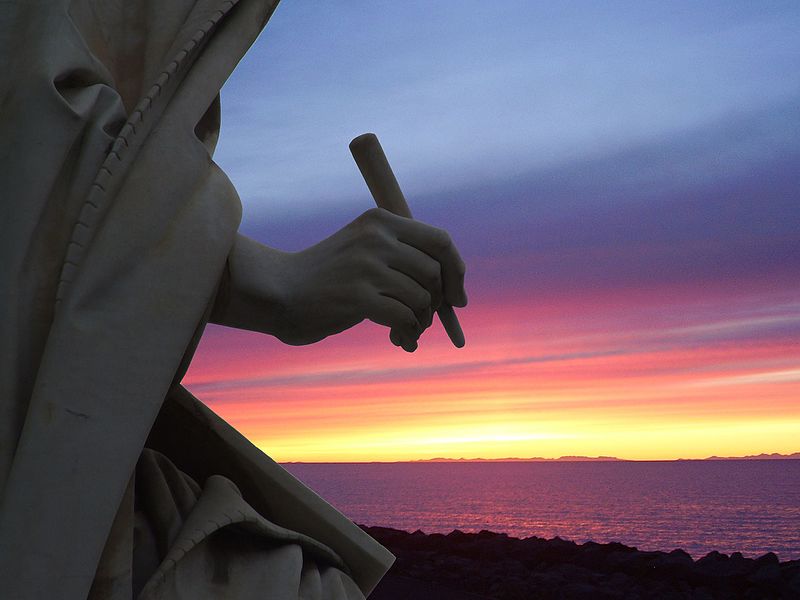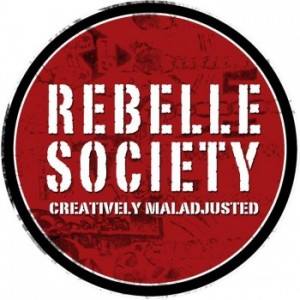Diving into the Mysterious Origins of Creativity: Alchemy and the Art of Nature.

{source}
Creativity has mysterious origins.
Where does that invisible something come from — that idea, image, impression, impulse, vision, fantasy — that the artist transmutes into a perceptible painting, a dance, a poem, a building, a life?
Most people would gladly admit that they don’t understand where creativity comes from. They can only name what they’re in touch with, if they try at all, with the kinds of names we seem to save for things we cannot comprehend — like God, Creator, Divine, Sacred, Spirit, Source, Universe, Muse, Ground, Nature.
So if the depths of creativity elude our intellectual excavations, what kind of creative ore can we get within our grasp? And how can we sift false from authentic gold?
Alchemy is the only tradition I know of that has made the creative process a religious pursuit. For the devout, this process was epitomized in the attempt to transmute lead into true gold. At least in European alchemy, gold was the ideal because in its qualities the alchemist found the criteria for recognizing true creative achievement.
From the perspective of alchemy, everything in Nature was thought to be in the process of creative development, from seeds, to cells, to stars, to selves — lead was considered the raw beginnings of gold, gold ungrown, undeveloped by creativity. So the transmutation of lead into gold was the alchemists’ attempt to follow Nature in her creative work.
Creativity, or what alchemists simply called The Art, is the path that life itself takes.
And for alchemists, gold embodies the qualities of creative realization, because it holds its form against corrosion or decay. It never becomes brittle or rusts away, as if there are no more defects left in it that would allow other elements the inroads to erode its state of completion, perfection.
Across cultures and times, gold has somehow universally conveyed its inherent uniqueness and worth. No one, it seems, who comes across gold in Nature, needs to be convinced of its uniqueness, value, and beauty.
But what does this tell us about our own creative efforts? What do these qualities of gold tell us about the criteria of authentic creativity, whether in a work of art or the work of life?
Let me put it in terms of false gold first. False gold, false creativity, is an outcome of imitation. It’s something trying to be something else. It seeks to make an outward impression that hides rather than reveals its own actual essence.
But there are tests that reveal genuine gold.
Real gold has a density that other metals can’t fake. What this means is that gold doesn’t just look like gold. It isn’t just an appearance. There’s a weight to it. You can’t put the right polish on something else and make it gold.
Food and work and sleep and sex don’t make a life, like rhyming words don’t make poetry. Art is more than mimicking a master’s color mix and brushstroke, and the thespian’s craft is more than correct pitch, posture, and gesture. These might show creative gloss and shine, but gloss and shine aren’t creative gold.
Gold also holds together in an acid test, while false gold falls apart. A biting critique eats away at an imitator. The pretender can’t stand the harsh assessment, and quickly abandons the surface act, exposing his cheaper and weaker inner metal. His devotion to creativity lasts as long as no one mocks or doubts it. If he has any acidic encounter, his imitation commitment melts away.
Not even the strongest magnet will stick to gold. It doesn’t need others to cling to it to demonstrate its worth. It shows its value in its refusal of others’ mindless attachment. Authentic creativity has no need to command a blind following. We want to give it attention, it doesn’t demand our attraction.
Gold holds true to what it is, and has no need to hide or announce it. It is gold throughout, outwardly and in its depths, even when its surface is mangled or scarred.
Like gold, authentic creativity will stand the test of time, no matter how frequently styles and standards change. Creative lives stand out in history, however different the people, and even when those people make us wince, cringe, or weep. We still somehow still sense the art of creativity at work in their lives, however short, flawed or tragic, or even offensive.
Something shows through that is incomparable, beautiful, and complete.
The alchemical criteria for authentic art entail that true creative gold only comes from the contribution we can make to the world — of ourselves, of our calling, and our craft — that is formed from the irreplaceable substance of our own specific lives.
Nature doesn’t produce life in a finished form. It makes seeds not flowers directly, infants not adults, energy first and then atoms and objects. And Nature does this deliberately, so to speak — from the perspective of the alchemists — to leave room for art, to demand art from itself, and require it of us if we want to complete anything. That is why each creative work of Nature is unique unto itself.
No leaf borrows another’s green, nor does any snowflake make itself from the same pattern of another’s frozen plight. For an authentic work of art, or for the authentic art of life, we cannot borrow someone else’s gold, or make gold from someone else’s life.
Nature won’t paint the canvas, it will provide an encounter, evoke an image or an insight, but we must give it color and form. Nature might give us feet, but our feet won’t dance for us. Our heart might beat on its own, but loving takes our creative effort.
Art is Nature’s aim and completion.
Without our humble attempts to make art from our lives, existence remains partly unpainted.
***
Dylan Hoffman, PhD, is a student — of life, of imagination, of soul. His apprenticeship to Soul is the essence of his own work as a writer and teacher. Dylan has founded the Spiritual Alchemy Institute to provide clients with instruction and guidance in the dynamics and development of the soul as it is symbolized, imagined, and practiced in the tradition of alchemy. Alchemy is called The Art by its devotees. It provides methods of meditation, processes of transformation, and images of the inner states and conditions that we must undergo to achieve wholeness — to integrate all the elements of our lives into a rich and unified soul. For Dylan, alchemy is where soul, life, and art become one, and make spiritual gold, create wholeness.
***
{Join us on Facebook, Twitter, Instagram & Pinterest}
Comments
Comments are closed.


Diving into the Mysterious Origins of Creativity: Alchemy and the Art of Nature | Spiritual Alchemy Institute
November 24, 2016 at 12:02 am[…] published by Rebelle Society — October 31, […]